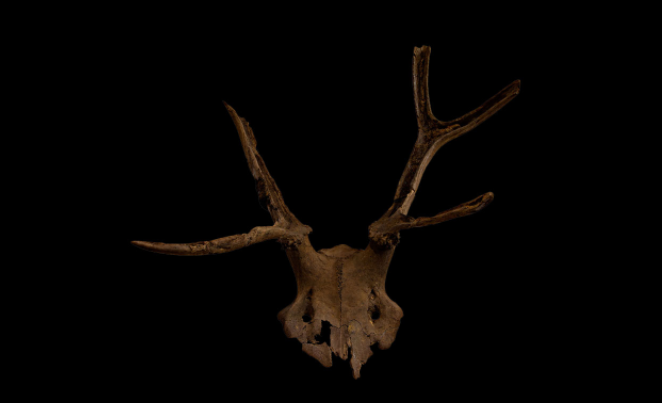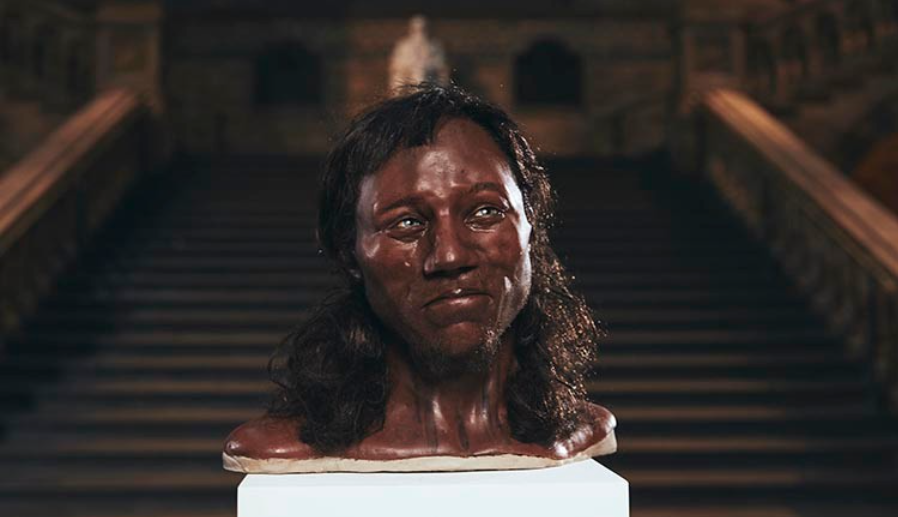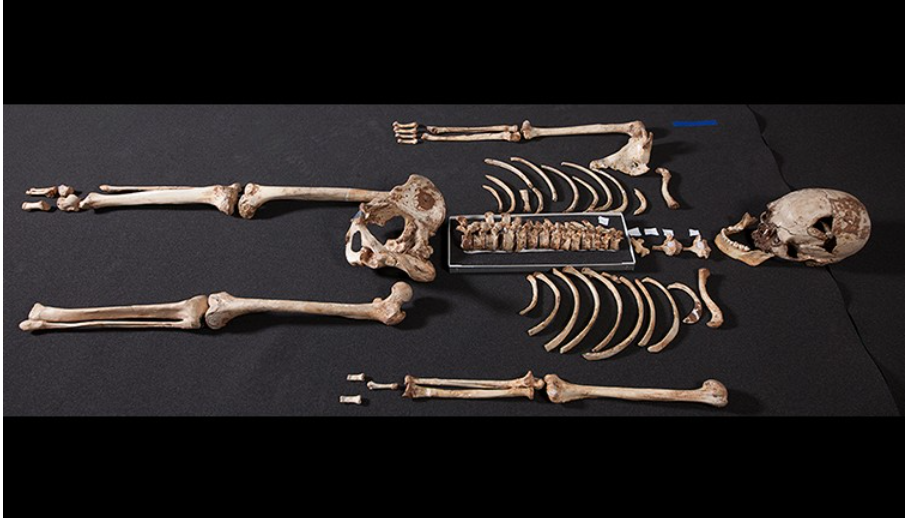Mesolithic Britain

Introduction to the Mesolithic Period
Following the Palaeolithic Age ('Old-Stone Age'), the Mesolithic ( 'Middle-Stone Age') ran from about 9000-4300 years ago. During this period humans spread and reached the far north of Scotland and famous British Mesolithic sites are found in the Mendips, at Star Carr in Yorkshire, and Oronsay in the Inner Hebrides. A building dating to around 8500 BC was discovered at Star Carr, and in Northumberland at a place called Howick, excavations have uncovered evidence of a large circular building dating to around 7600 BC which is thought to be a dwelling. It used to be thought that the Britons of the Mesolithic period were nomadic (i.e. moved around from place to place), but these finds reveal a more complex picture of seasonal occupation or, in some cases, permanent occupation.
At Star Carr archaeologists have uncovered red deer skull-caps (below) - which may have been worn as headdresses - as well as semiprecious stones including amber, hematite and pyrite and an engraved shale pendant known as the oldest Mesolithic art in Britain.

One of the Star Carr red-deer skullcaps
You can read more about the finds at Star Carr on the Star Carr Archaeology Project website.
Cheddar Man
One of the best known examples of a Mesolithic Briton is so-called Cheddar Man. The Natural History Museum have a great website about Cheddar Man which is well worth a visit. The photos and some of the text in the following account is taken from that excellent site.

Reconstruction of the head of Cheddar Man
Ancient DNA from Cheddar Man, a Mesolithic skeleton discovered in 1903 at Gough's Cave in Cheddar Gorge, Somerset, has helped Museum scientists paint a portrait of one of the oldest modern humans in Britain. Cheddar Man was a Mesolithic hunter-gatherer of the sepcies Homo sapiens (fully modern human) with dark skin and blue eyes. He was about 166 centimetres tall and died in his twenties. His skeleton (below) was uncovered in 1903 during improvements to drainage for Gough's Cave, a popular tourist attraction. When he was first found, there were claims that Cheddar Man dated from 40,000-80,000 years ago. But subsequent radiocarbon dating from the 1970s onwards suggests he lived around 10,000 years ago.

In fact Cheddar Man is the oldest almost complete skeleton of our species, Homo sapiens, ever found in Britain. His skeleton shows a narrow pelvis shape. It's uncertain whether a hole in his forehead was from an infection or from damage at the time of excavation. Like all humans across Europe at the time, Cheddar Man was lactose intolerant, meaning that he was unable to digest milk as an adult. This ability is something some modern humans have developed, but still today most adults (around 65–70% of the world's population) are lactose intolerant.
At the time Cheddar Man was alive, Britain was attached to continental Europe (Doggerland was still in existence) and the landscape was becoming densely forested. The people amongst whom Cheddar Man lived were mainly hunter gatherers, living by hunting game as well as gathering seeds and nuts and living quite complex lives. In addition to seeds and nuts, Cheddar Man's diet would have consisted of red deer, aurochs (large wild cattle) along with some freshwater fish.
